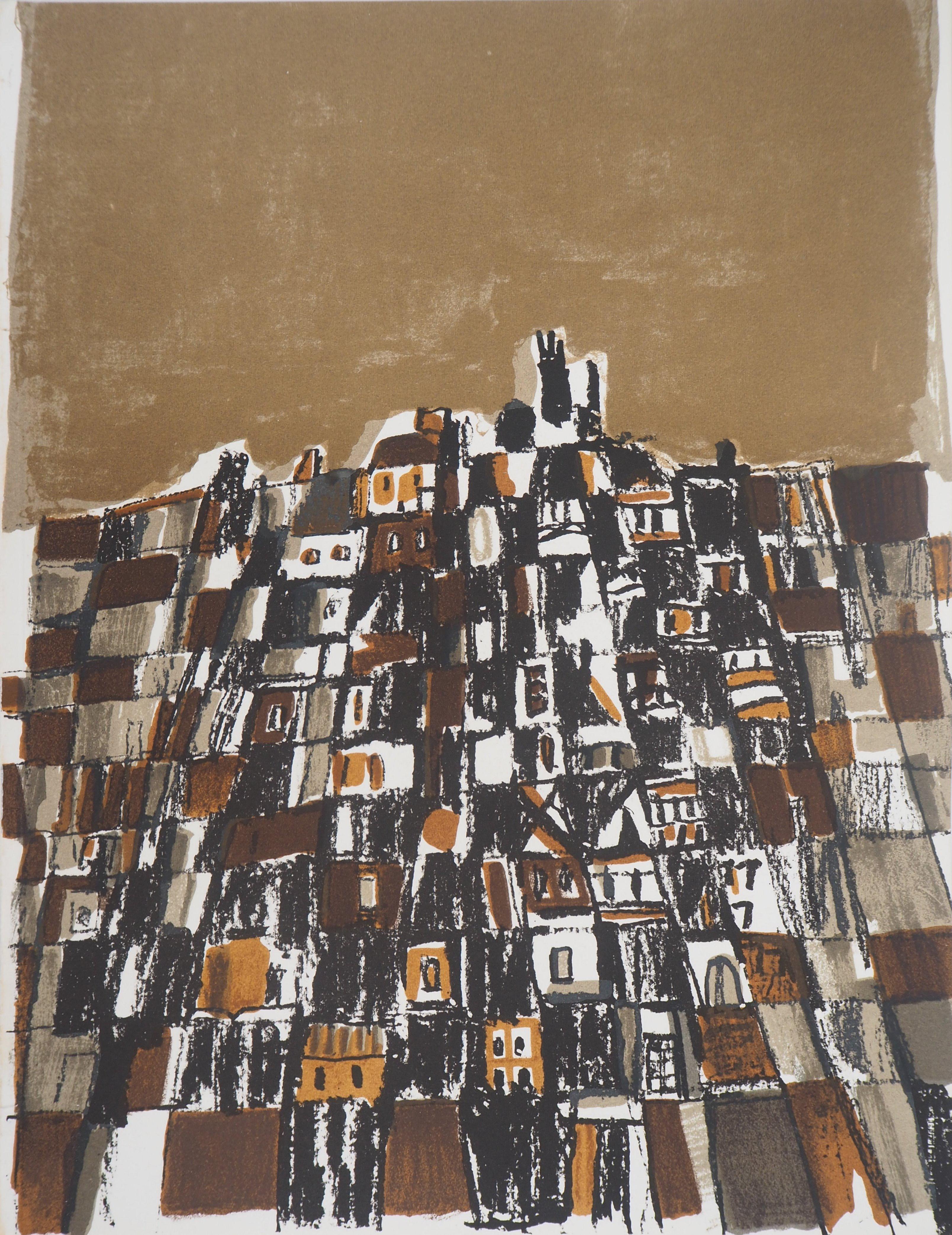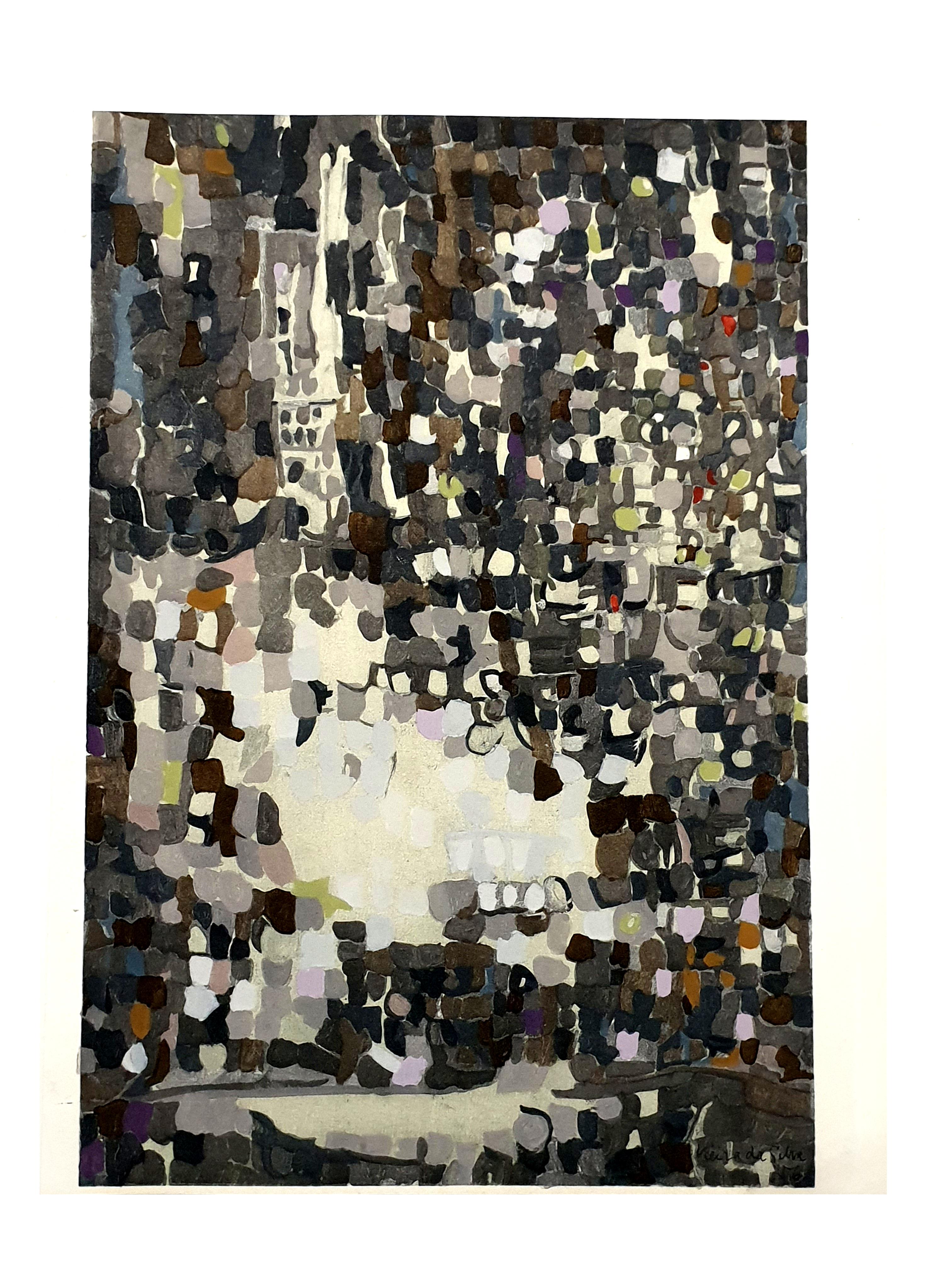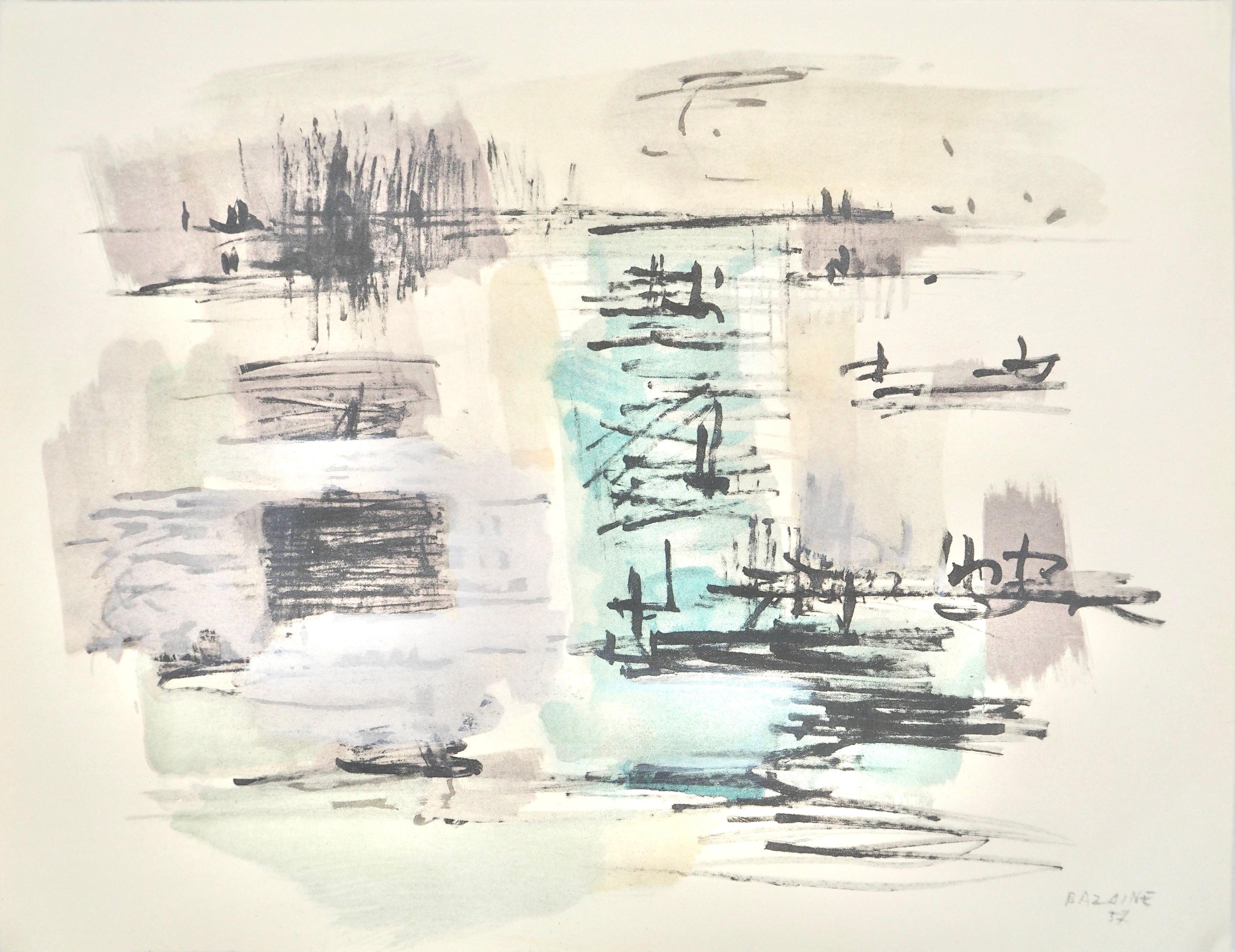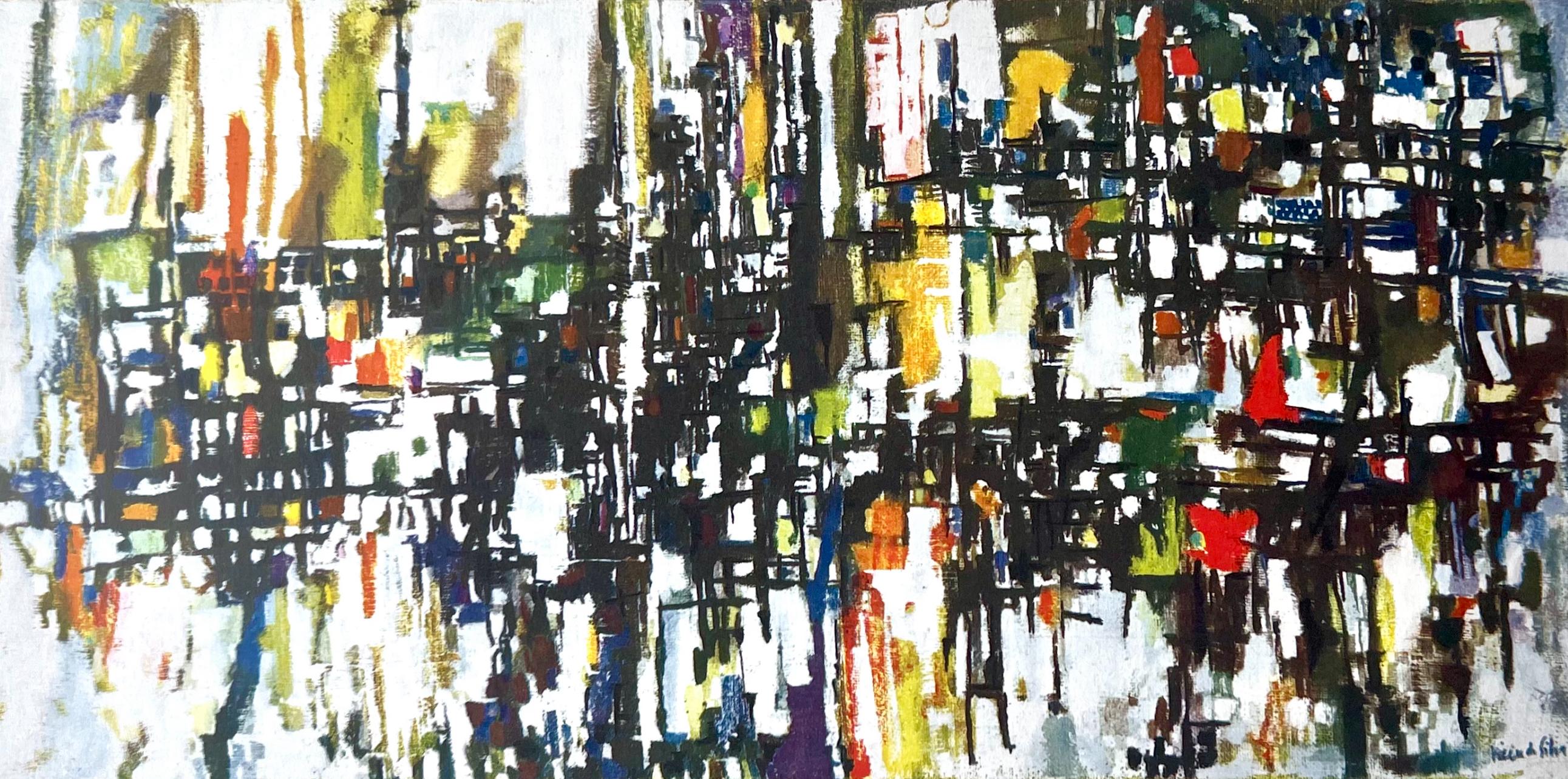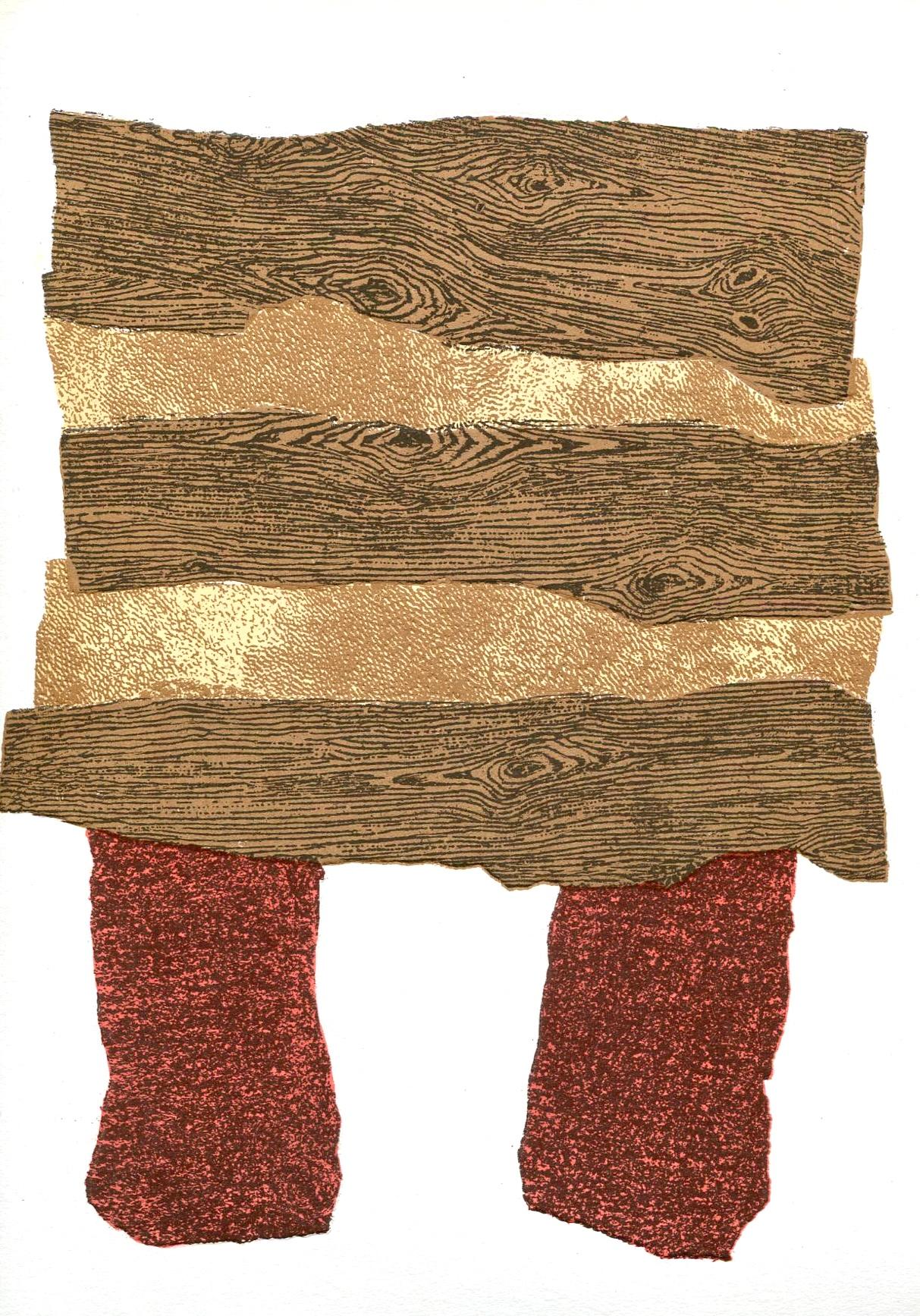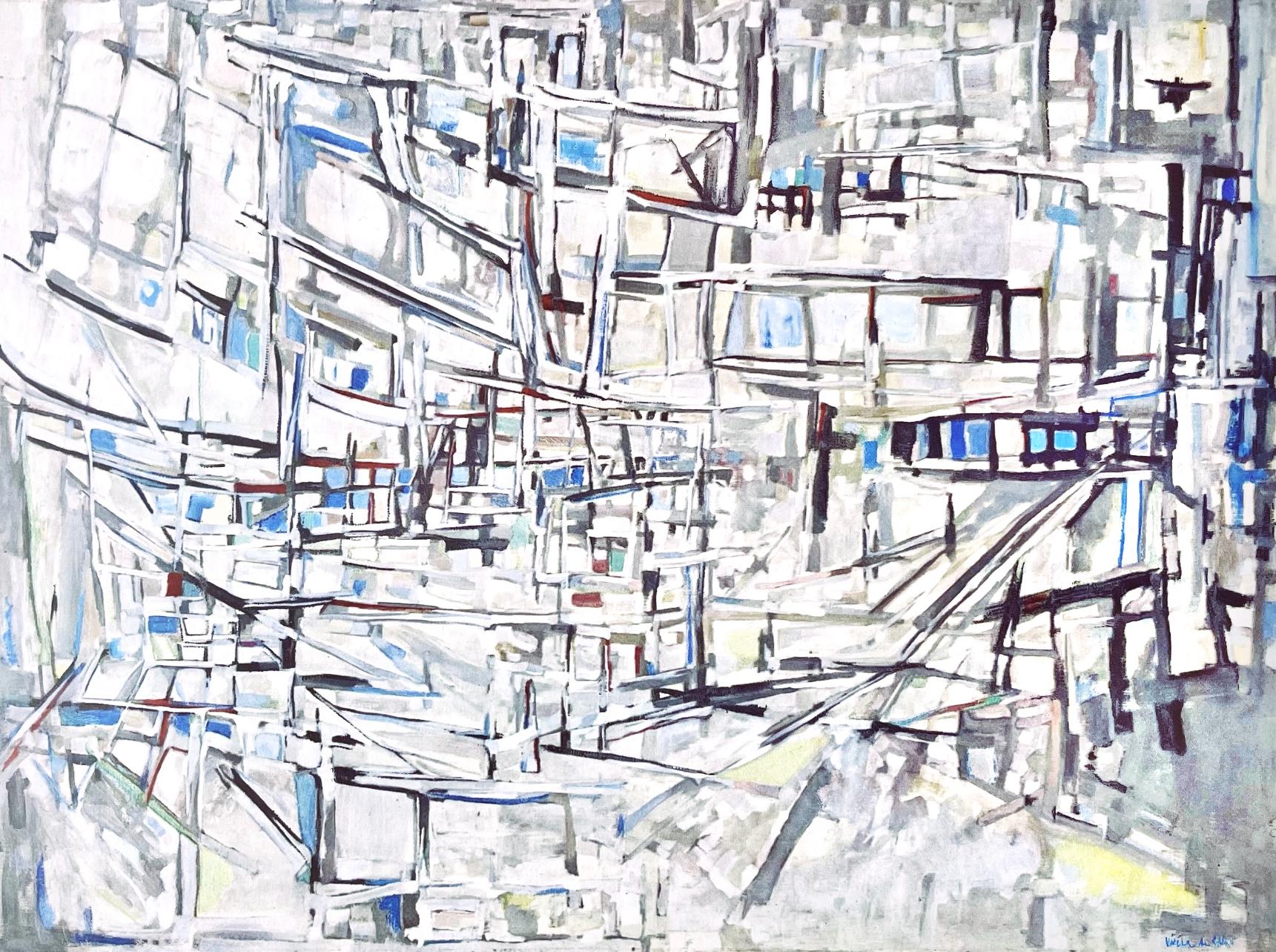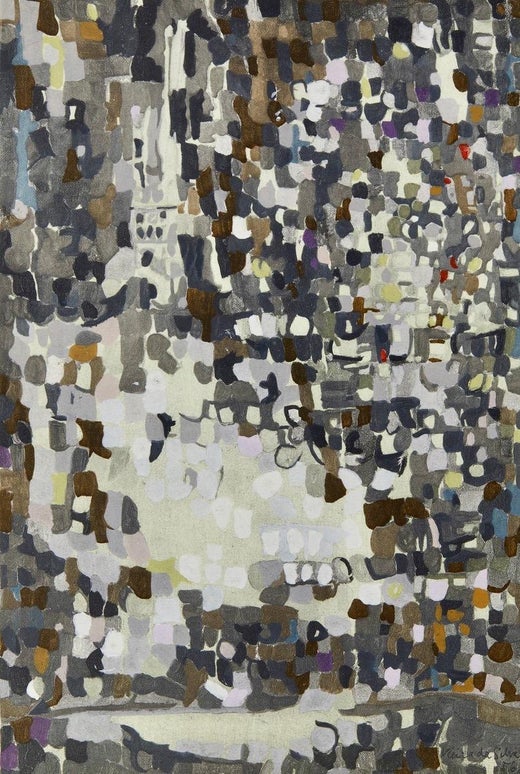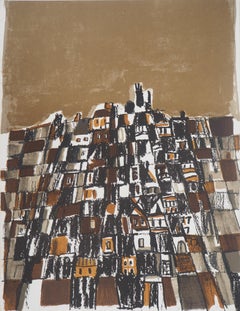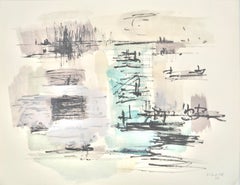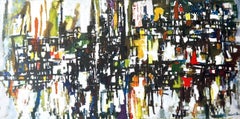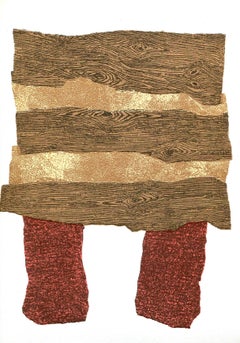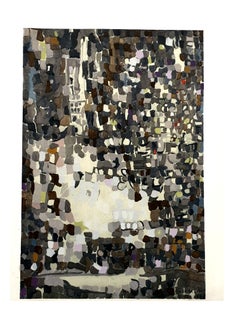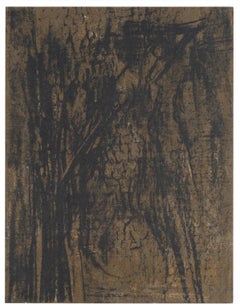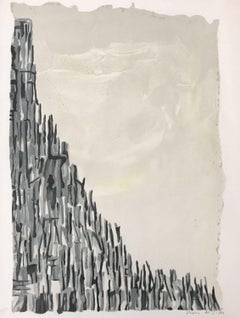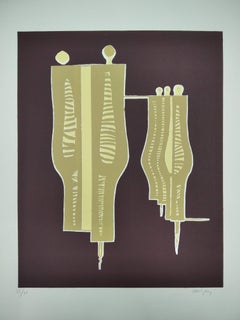This exquisite lithograph by Maria Helena Vieira da Silva (1908–1992), titled Rue d'Atelier (Studio Street), from the album XXe Siecle, Nouvelle serie, XXXIXe Annee, No. 48, originates from the 1977 edition published by Societe Internationale d'Art XXe siecle, Paris, and printed by Mourlot Freres, Paris, 1977. Rue d'Atelier exemplifies Vieira da Silva’s distinctive vision of spatial abstraction—an intricate interplay of geometry, rhythm, and light that transforms architectural structure into poetic meditation.
Executed as a lithograph on velin paper, this work measures 12.5 x 9.75 inches. Unsigned and unnumbered, as issued. The edition exemplifies the superb craftsmanship of Mourlot Freres, Paris.
Artwork Details:
Artist: Maria Helena Vieira da Silva (1908–1992)
Title: Rue d'Atelier (Studio Street), from the album XXe Siecle, Nouvelle serie, XXXIXe Annee, No. 48
Medium: Lithograph on velin paper
Dimensions: 12.5 x 9.75 inches (31.75 x 24.77 cm)
Inscription: Unsigned and unnumbered, as issued
Date: 1977
Publisher: Societe Internationale d'Art XXe siecle, Paris
Printer: Mourlot Freres, Paris
Catalogue raisonne reference: Benezit 168; Fondation Vieira da Silva archives.
Condition: Well preserved, consistent with age and medium
Provenance: From the album XXe Siecle, Nouvelle serie, XXXIXe Annee, No. 48, published by Societe Internationale d'Art XXe siecle, Paris; printed by Mourlot Freres, Paris, 1977
About the Publication:
Gualtieri di San Lazzaro's XXe Siecle (Twentieth Century) was one of the most influential art journals of the modern era, founded in Paris in 1938 as a platform for the greatest painters, sculptors, and writers of the 20th century. San Lazzaro, a visionary editor, critic, and champion of modernism, believed that art and literature should coexist as expressions of a shared human imagination. Under his direction, XXe Siecle became a cultural bridge between Europe and the wider world, publishing special issues devoted to leading figures such as Picasso, Matisse, Chagall, Braque, Calder, Miro, Kandinsky, and Leger. Each edition combined essays by renowned critics and poets with original lithographs printed by the foremost ateliers of Paris, London, and New York, including Mourlot, Curwen, and Universal Graphics, creating a uniquely rich dialogue between text and image. Through XXe Siecle, San Lazzaro preserved the creative spirit of the avant-garde during and after World War II, championing freedom of expression and the evolution of abstraction, surrealism, and modern thought. Over nearly four decades, the journal shaped international taste and defined the intellectual landscape of postwar art publishing. Today, XXe Siecle remains celebrated for its extraordinary synthesis of art, literature, and design, an enduring testament to Gualtieri di San Lazzaro's belief that the visual arts are the soul of the modern age.
About the Artist:
Maria Helena Vieira da Silva (1908–1992) was a Portuguese-born French painter whose intricate, luminous abstractions of space, architecture, and memory made her one of the most influential artists of the 20th century and a central figure in postwar European modernism. Known for her labyrinthine compositions of light, rhythm, and geometric fragmentation, Vieira da Silva transformed the language of abstraction into a poetic exploration of perception and consciousness. Born in Lisbon, she moved to Paris in 1928, where she joined the vibrant avant-garde community and absorbed influences from Pablo Picasso, Alexander Calder, Alberto Giacometti, Salvador Dali, Joan Miro, Wassily Kandinsky, Marcel Duchamp, and Man Ray. From Picasso, she learned to deconstruct space; from Kandinsky and Miro, she discovered the expressive spirituality of abstraction; and from Duchamp and Man Ray, she inherited the conceptual freedom to merge intellect with intuition. Yet Vieira da Silva’s art was wholly original—a synthesis of geometry, emotion, and memory rendered through pulsating networks of line and color. Her early works reflected Constructivist and Cubist structures, but by the 1940s she had developed her mature style, a visionary form of abstraction that transformed cities, libraries, and imagined spaces into shimmering mosaics of form and light. During World War II, she fled to Brazil with her husband, the painter Arpad Szenes, where the tropical atmosphere infused her palette with luminosity before her return to Paris in 1947, when she emerged as one of the leading figures of the Ecole de Paris. Her paintings such as La Bibliotheque (1949) and A Cidade (1950) revealed her ability to fuse architecture and emotion, intellect and intuition, depicting infinite spatial grids that evoke both the complexity of urban life and the architecture of thought itself. Throughout the 1950s and 1960s, she gained international acclaim, exhibiting at major institutions including the Museum of Modern Art, the Tate Modern, the Centre Pompidou, and the Calouste Gulbenkian Museum. In 1966, she became the first woman to receive France’s Grand Prix National des Arts, affirming her pioneering role in abstract painting. Vieira da Silva’s work bridged the precision of Constructivism with the lyricism of Surrealism, inspiring later artists such as Nicolas de Stael, Pierre Soulages, Bridget Riley, and Sean Scully, who drew from her ability to harmonize geometry and emotion. Her paintings—often compared to musical compositions or woven tapestries of light—continue to captivate for their intellectual rigor and spiritual resonance, offering viewers entry into the metaphysical architecture of perception itself. Standing alongside Pablo Picasso, Alexander Calder, Alberto Giacometti, Salvador Dali, Joan Miro, Wassily Kandinsky, Marcel Duchamp, and Man Ray, Vieira da Silva remains one of the great poetic visionaries of modern abstraction. Her highest auction record was achieved by A Cidade (1955), which sold for $2.68 million USD at Sotheby’s, London, on June 28, 2012, reaffirming her legacy as one of the most intellectually profound, spiritually evocative, and collectible female artists of the modern era.
Maria Helena Vieira da Silva Rue d'Atelier, Vieira da Silva Studio Street, Vieira da Silva 1977 XXe siecle, Vieira da Silva Mourlot lithograph, Vieira da Silva velin paper, Vieira da Silva collectible print.
